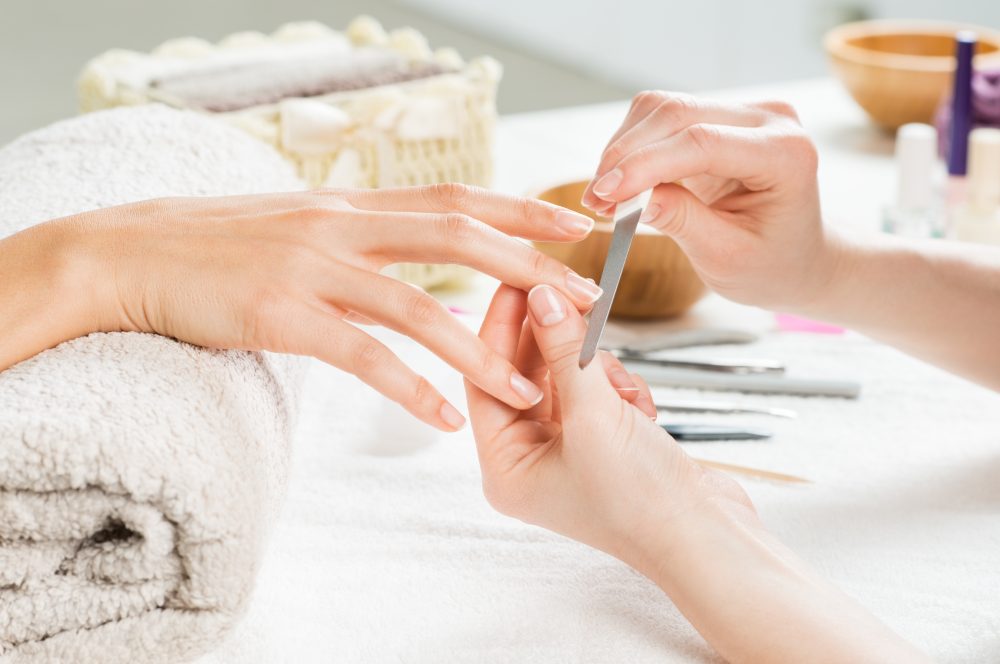There’s nothing like the satisfaction of showing off a skilled salon manicure. But maintaining that immaculate look takes savvy. While drying time passes, resistant temptations abound causing damage before you know it. This article profiles 10 sabotaging habits to shun when nails are fresh. Discover which regular tasks are most harsh, from nail art to cleaning and exercise. Avoid regrets with strategies ensuring polish stays pristine.
Skip hot water
Taking a hot shower or bath right after getting your nails done can cause the polish to wrinkle, peel or chip more quickly. The heat from hot water makes the nail polish soften and lose its shine. It’s best to stick to warm water for at least a day to protect your fresh manicure. The heated water makes microscopic cracks and crevices in the polish that water can then seep into. Over time, this continual seeping of water under the polish layer causes it to lift and peel away from the nail. Instead, stick to lukewarm showers for 24 hours after getting your nails done.
Be gentle on nails
It’s tempting to want to pick at your nails or cuticles when they’re wet with polish, but it’s important to be gentle and avoid picking. Picking or pushing back cuticles while the polish is still wet can cause smudges, ridges or bubbles in the polish that will be very noticeable.
Nail polish takes time to fully dry, usually somewhere between 15-30 minutes depending on the polish and application. Until it’s fully dry, be careful not to touch or bump your nails against anything that could disturb the surface of the wet polish. Rushing to get things done with wet nails often results in messes and smudges that require a full re-do.
Moisturize cuticles
After a salon manicure, it’s important to continue proper nail care at home by moisturizing your cuticles daily. Dry, cracked cuticles don’t just look unattractive, they can also create ridges or peeling that accelerates chipping of the polish. Reach for a thick cuticle cream or oil and gently push it into the skin around the nails. This keeps cuticles supple and less likely to catch on fabrics or snag polish.
Many people neglect this important step, not realizing how it impacts the health of natural nails beneath the color. Taking just a minute morning and night to massage in a cream can make manicures last longer.
Protect from chemicals
It’s best to avoid getting nails directly exposed to any harsh chemicals for 24 hours after a manicure. This includes things like household cleaners, gardening chemicals, nail polish remover or hair dye products. The fumes from these chemicals can dry out or even damage freshly polished nails. They may cause the polish to stain, crackle or peel prematurely.
For example, if doing dishes or housework right after a manicure, wear rubber gloves to create a protective barrier between your nails and the cleaning fluids. Waiting a full day after your manicure allows the polish to fully cure before being exposed to substances that could compromise the finish.
Let polish dry fully
Rushing through the drying process is one of the biggest mistakes made after a manicure. New polish needs at least 15-30 minutes to fully dry and cure. But it’s tempting to get busy with tasks before it’s fully set. Doing things like typing on phones or keyboards, opening jars or bottles, or washing hands too soon can cause smudges in the wet colour or indentations from fingerprints that permanently embed in the layer of polish. Wait patiently until it’s completely dry to the touch before resuming regular activities. Letting each coat fully cure will result in a professional looking finish that has greater durability to last through daily life.
Avoid picking at polish
It’s a hard habit to break, but picking or biting at your nails can seriously damage a manicure and shorten its lifespan. When the polish starts to chip at the edges, it’s easy to want to pick or bite it off. However, this damages the natural nail and cuticle, creating ridges and hangnails for polish to catch on. It also leads to an uneven, spotty look as pieces peel or flake away.
Train yourself to willfully resist the urge to pick. Instead, gently file away any raised edges with a nail buffer when you notice chipping first occurring. With willpower and a regular manicure schedule, nasty picking habits can be replaced with well-manicured nails.
Use base and top coat
For manicures to really last their full lifespan, it’s important to always use a base coat and top coat along with your chosen color polish. The base coat provides a protective layer between the nail plate and color polish to prevent stains and promote adhesion. It fills in the surface irregularities too.
Top coat serves as a durable, high-shine sealing layer once the color coat is dry. This guards against water spots and scuffs that can cause premature chipping. Using high-quality, smoothing base and fast-drying top coats along with lighter color polishes that don’t stain as deep can prolong a manicure 2-3 days longer than color alone. The extra layer of protection is well worth the minimal extra time.
Reapply top coat
Even with a good nourishing base and top coat routine, polish may start to fade and chip within 5-7 days. However, manicures don’t have to end there. By reapplying just, a top coat every few days once the color polish is still intact, it brings faded nails back to life without needing a full re-do.
The top coat re-seals the remaining color layer, restoring shine and smoothness. Many opt to switch between a fast-dry top coat for convenience, and a thicker glossy top coat every other reapplication for maximum durability. Regular top coat touch-ups allow manicures to often last 10-14 days between full removals saving both time and money in the long run.
Wear gloves for chores
Harsh soaps and chemicals found in household cleaners are some of the worst enemies of freshly manicured nails. Doing ordinary tasks like washing dishes, cleaning bathrooms or doing laundry without protection will cause polish to stain, peel or chip within just a few days.
Investing in a pair of reusable rubber gloves is key for keeping manicures in tip-top shape when tackling chores. The gloves provide an important barrier between the nails and abrasive detergents. Even brief exposures over time will break down polish layers prematurely. Play it safe by always slipping on gloves for messy jobs until the manicure has fully cured, usually within a week.
Use cold water for nails
While warming up with hot showers may feel heavenly, it’s not the best for manicured nails. Over time, the frequent exposure to hot water causes cuticles to dry out and polish to degrade faster. Hot water strips natural oils from nails and cuticles. It also opens pores and cuticle skin, allowing water to more easily penetrate underneath fresh polish. Instead, make cool or lukewarm water the new normal when washing hands and showering. The milder temperature protects natural moisture levels in nails. It also prevents microscopic cracks in the polish layer that lead to peeling. Keeping nails cool keeps manicures looking fresher for longer.
Summary
- Avoid hot water which can cause polish to chip faster
- Be gentle with nails while they are drying to avoid damage
- Moisturize cuticles daily to keep them healthy and nails protected
- Limit chemical exposure like household cleaners which can dry nails out
- Let polish fully cure before exposing to water to avoid chipping
- Resist picking at polish which causes chips and breaks
- Use high-quality base and top coats for extra protection and longevity
- Do periodic top coat touch-ups between full manicures to repair chips
- Wear gloves for household chores to avoid nicks and chips in polish
- Keep nails away from hot temperatures like ovens which accelerate polish wear
- Mastering these simple care techniques extends manicure wear between salon visits







